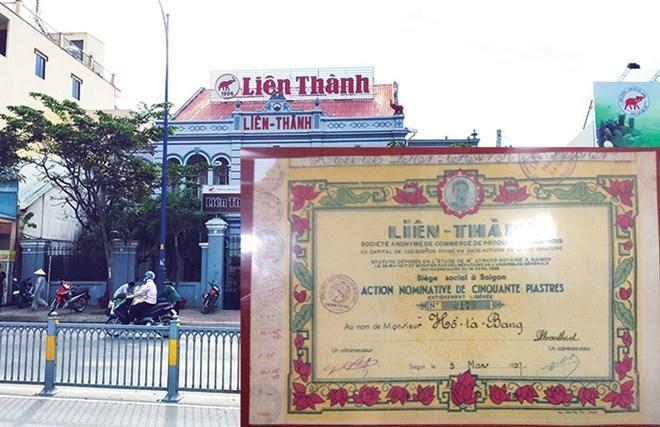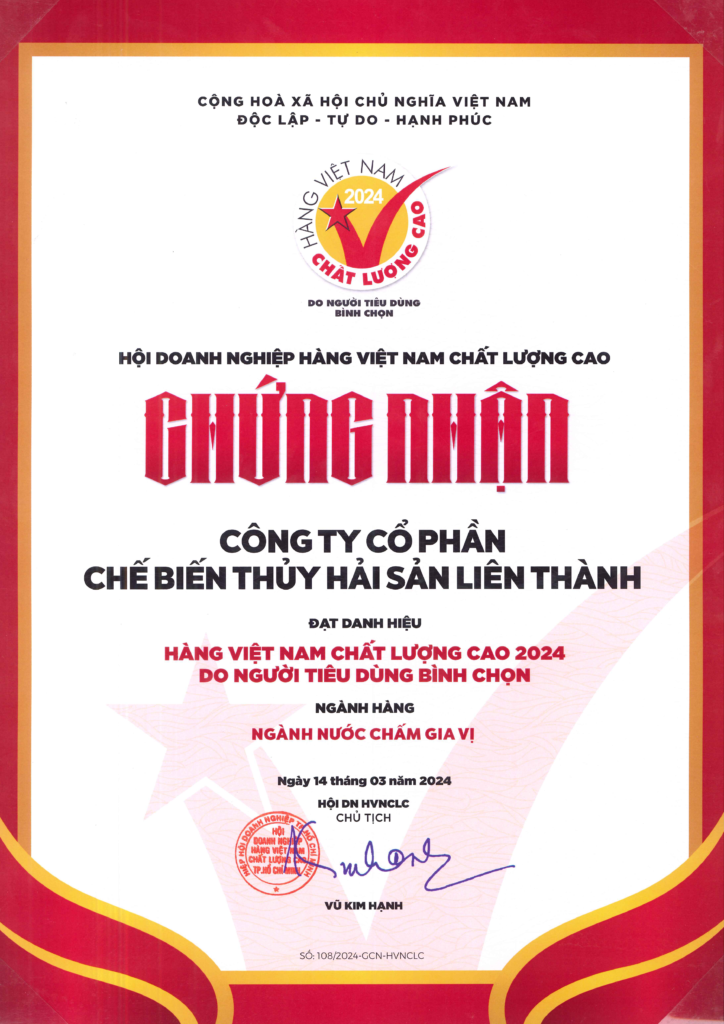Untold story about the oldest stock in Vietnam
Untold story about the oldest stock in Vietnam
At the exhibition space with the theme “Childhood and Youth of Chairman Ho Chi Minh” of the Museum named after Uncle Ho at Nha Rong Museum, there is a display of some quite special “Named Stock Securities” issued in 1937.
Why are these stocks displayed here? What does it have to do with Uncle Ho’s career path? Why was it called an anonymous company? How is the company that released it doing currently? The museum staff’s explanations were not satisfying enough, causing me to go to 2 other locations to find out.
Origin of the stock
Following the address written on the stock certificate, from Nha Rong Museum, I went along the bank of Ben Nghe canal – Ben Van Don Street for about 2 km, then I reached house number 243. A villa still retains its French architectural style. Nearly a hundred years have passed but the street name and house number are still the same, only the landscape has changed. This is the “General: No. 243 Ben Van Don – Saigon” of Lien Thanh Company – where the above shares were issued.
Going back in history, in 1910, on the journey from his hometown to Saigon, young man Nguyen Tat Thanh stayed and taught for a while at Duc Thanh School, Binh Thuan province. This school is one of three subsidiaries of Lien Thanh “Group”, fully owned by Vietnamese people. It turns out that it is not just now that Vietnam has multi-industry economic corporations covering manufacturing, real estate, education, etc., but this model has been implemented since 1906.

In response to the Duy Tan movement led by scholar Phan Chau Trinh, six patriotic founding shareholders, including Mr. Nguyen Trong Loi and Nguyen Quy Anh, who were the sons of a patriotic mandarin of the Nguyen Dynasty and a poet named Nguyen Thong, along with Mr. Ho Ta Bang and three others, established a business to raise funds for their own careers.
For 3 consecutive years, the Lien Thanh “Group” established 3 “subsidiaries”, Lien Thanh Library (in 1905) to disseminate books and newspapers with patriotic content; Lien Thanh Fish Sauce Company (1906) operated a fundraising business and Duc Thanh School (1907) taught children of patriots and poor workers with a patriotic and progressive curriculum. Lien Thanh Fish Sauce Company was initially headquartered in Phan Thiet, with a branch in Cho Lon. Due to business development, it moved its headquarters to Saigon in 1922 and issued additional shares in the photo in 1937.
After leaving Binh Thuan province, Nguyen Tat Thanh went to Saigon and stayed at a house that was a branch of Lien Thanh Company. That is the row of houses 1-3-5 Chau Van Liem Street, District 5, TP. HCM. Lien Thanh selected this location as a branch due to its position in the bustling Cho Lon commercial area. The street outside is situated alongside a large canal that connects to the Ben Nghe canal, which flows towards Saigon Port. This is highly convenient for boats that transport fish sauce and goods imported from Phan Thiet. Based on the 1911 map of Saigon – Cho Lon, it was observed that the French government had filled in the canal, which resulted in the creation of Chau Van Liem street as it exists today. Additionally, both Nguyen Hue and Ham Nghi streets were formerly large canals that have also been filled in. The young man Nguyen Tat Thanh stayed here for nearly 4 months before boarding the ship to go to France on June 5, 1911.
According to Lien Thanh’s website, they contributed to organizing and financially supporting patriot Nguyen Tat Thanh’s visit to Saigon and France. A video clip featuring Mr. Vo Hy Quang confirms that when Nguyen Tat Thanh boarded the train to France, Lien Thanh Company sent 27 dong for the fare. However, Uncle Ho only took 18 dong, and the remaining 9 dong is still in kept. It is uncertain whether the claim is true or not, but there are no documents displayed at any of the three Museum locations to prove it. Nonetheless, it may not be difficult to comprehend as Nguyen Tat Thanh was a teacher at Duc Thanh School, and Lien Thanh had arranged a place. In Saigon, it was common for patriotic scholars to donate a dozen francs as travel fare. Although the stock sheets displayed at the Museum are not directly related to Nguyen Tat Thanh, they reveal something else about the formation of Joint Stock Companies in Vietnam since the early years of the last century.
From an anonymous company…
Since the 1900s, in addition to “ten thousand countries” companies – multinational companies as they are called today, anonymous companies (JSC), an advanced form of business organization, have been introduced into Vietnam. The document in question was a stock sheet called “NOTE EQUITY SECURITIES”. The sheet contained a mix of familiar and unfamiliar information and terms, such as “anonymous company” and “summary”. The sheet listed the following information from top to bottom: “Company” – an anonymous company founded in 1906 with a capital of 801,000 Vietnamese silver coins. The company was divided into 2,670 shares, with each share priced at 300 VND, and all shares were fully paid up. The company’s address was No. 243 Ben Van Don, Saigon, and its national catalog number was 36-617-21-001. The company charter was submitted to the Saigon Notary Office located at 97 Pasteur Street on May 29, 1917.
Anonymous company, or faceless company is another name for JSC, introduced to Vietnam at the beginning of the last century because it was related to a set of laws of Napoleon. During his time in prison, Napoleon was eager to learn and read books, and spent much of his time studying ancient Roman law. No one expected that, just over a decade later, Napoleon would build his own set of laws for France. After ascending the throne, in 1804, Napoleon, with his reformist mindset and profound knowledge and extraordinary memory from the books he had read, personally directed a committee of famous lawyers to draft a book of civil law. The Napoleonic Code consists of three main parts: personality, property, and obligations, which contain favorable principles and conditions to promote initiative and encourage business, which have had a strong influence in Europe and is applied in many countries. In Vietnam during the French colonial period at the beginning of the century, company law was first applied in the “Civil Code implemented in the Southern and Northern Courts”, in which section 5 (Chapter IX) talks about incorporated associations—divided into two types: human association and capital. In particular, capital associations are divided into two types: anonymous associations – Joint Stock Companies and joint stock associations – simple syndicated capital companies.
If we look closely, we will see that the above stock sheet does not have the seal of Lien Thanh Company; The company’s legal representative signed the stock sheet with not only 1 Director but 2 administrators, then the charter must be submitted to the Chief Accountant’s Office as it is now submitted to the Department of Planning and Investment. How do these points coincide with the new laws of the Enterprise Law 2014?
History has been repeating cycles in a spiral shape. Vietnam has progressed significantly over the past century, and now it has become easier to establish a company in the country. The key difference is that the joint stock companies operating in Vietnam are wholly Vietnamese and they abide by the laws of an independent Vietnam, rather than any protectionist or foreign law. Enterprise Law 2014, a revolution in the establishment and management of enterprises. From now on, the right to freedom of business has been constitutional and clarified by law, only things that the State has clearly prohibited in writing are not allowed to do business. Even legal representation does not depend on a single individual anymore. These important reforms will definitely spark a new wave of business, creating new vitality for the Vietnamese economy.
…to the stock exchange bell
Physically, the electric bell of the New York Stock Exchange (NYSE) or the gong of the Ho Chi Minh City Stock Exchange are just a form of sound signal. However, for a business, it has very important meaning. Although joint stock companies and corporations existed during the French colonial period, as well as during the American resistance war, it was only after Vietnam regained unity, independence, and a position in the world that the country established its own Stock Exchange.
After the success of Resolution No. 10 in agriculture, perhaps the first shot to launch the establishment of Joint Stock Companies was also in Hai Phong. In the mid-80s, Hai Phong Shipping Company (Haiphongship) had a creative way in the context of that time, allowing crew members to contribute shares in gold to do business together. With this primitive form of Joint Stock Company, the once famous Red Poinciana ships transported and traded prosperously, bringing in a lot of valuable foreign currency in the context of our country’s embargo.
5 years later (1993), the first 4 companies – Gemadept, REE, Hiep An Shoe Factory and Animal Feed Processing Enterprise were allowed by the Government to pilot the transformation from SOEs to Joint Stock Companies. Since that time, there have been more and more newly established joint stock companies and equitized companies, and the need to buy, sell and exchange additional shares has increased. Those are the basic premises to form the Vietnam stock market.
After more than 100 years since the appearance of Joint Stock Companies in Vietnam, in July 2000, the Ho Chi Minh City Stock Exchange (now Ho Chi Minh City Stock Exchange Department) was born, marking a new development step of the Vietnamese economy. Although Vietnam Joint Stock Company has had its ups and downs and many employees have left for various reasons, its development process remains unstoppable. The journey from the “Named Share Securities” newspaper to the electronic stock exchange, from the business provisions in the Napoleonic Code enforced in a colonial country to the 2014 Enterprise Law of an independent country, spans over a century. It is a long road that aims to align the freedom of business and the right to get rich with economic laws. That is the driving force for Vietnam’s economy to take off, develop with the ASEAN economic community, and integrate with the world.
(According to ĐTCK)
https://vietnamnet.vn/vn/kinh-doanh/chuyen-chua-biet-ve-to-co-phieu-co-nhat-viet-nam-222556.html






